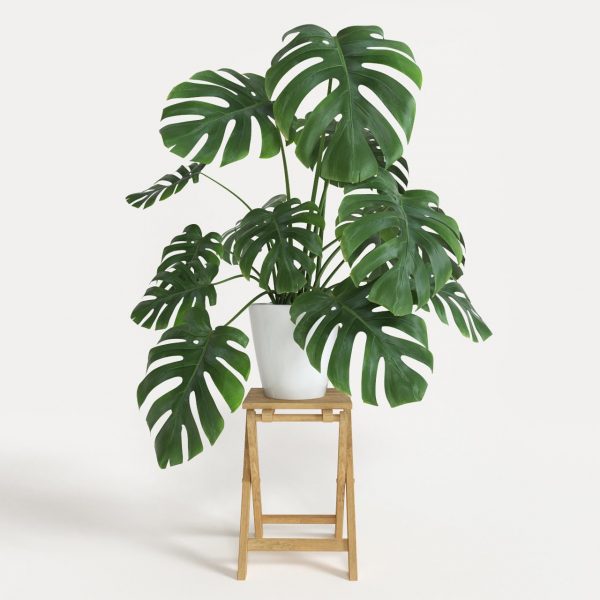Monstera deliciosa – Split Leaf Philodendron
Split leaf philodendron, a tropical plant with an exquisite fruit has been masquerading as a common houseplant. It’s a common houseplant, and you may already have one.
Perhaps you call it split-leaf philodendron or the more descriptive Swiss-cheese plant. The plant is actually a philodendron clone known as Monstera deliciosa.
As the plant is properly named, Monstera can have rather monstrous leaves, which may account for the monstrous portion of its name.
Wild monsteras grow leaves a foot or more across along the edges of Mexico’s steamy, tropical jungles.
The leaves are pocked with large holes, similar to Swiss cheese, and deeply cut along their edges in that bright, dappled light.
Indoor growing conditions are frequently insufficient to allow for the development of large leaves or holes.
The name monstera may have originated as a reference to the plant’s size. This vine’s aerial roots will grasp a tree trunk in a tropical forest and then clamber 30 feet or more skyward. Again, such exuberant growth is uncommon on an indoor monstera.
Nonetheless, monstera is one of the easiest houseplants to grow – another similarity to philodendrons, aside from leaf shape and vining habit.
The more favorable the growing conditions, the more attractive the plant appears. Except in the summer, monsteras prefer high humidity and plenty of light. Because the plants are truly tropical, they prefer year-round heat, not just warmth, but heat.
A monstera vine requires support in optimal growing conditions. One method of providing support is to roll a length of chicken wire, stuff it with coarse sphagnum moss, and stake it next to the plant.
This sphagnum moss cylinder adds moisture to the area around the plant and provides a moist surface for the aerial roots to stick to. The plant is near as content climbing any piece of rough wood.
What about the fruit dubbed “deliciosa”? Ripe fruits resemble a cross between an ear of corn and a pine cone.
The fruit must be completely ripe before eating, at which point the flavor is a delectable combination of pineapple and banana.
While a monstera plant is relatively easy to grow, it requires a tropical climate or a perpetually warm greenhouse to bear fruit.
Split Leaf Philodendron Pruning Care
Whether you keep your split-leaf Philodendron indoors or outdoors, it may require a monthly cut during the growing season.
The leaf nodes are very elaborate, they may also need a monthly cut, but you do not see where the root balls need it.
Cut off the plant’s trunk (Philodsendrons) from the lower leaves to the base of each leaf cut, and then the upper leaves up to a few centimeters.
If you plan to cut the Philodendron leaf, the tools you will be using must be sterile.
Once you have your tools and have identified the leaves and stems for cutting, it’s time to snip away.
Remove the leaves and stalk with a large pruning shear and sterilize the shears.
SPLIT LEAF PHILODENDRON PROPAGATING
If you want to propagate your cuttings, you should prune them in spring, when they naturally grow faster.
You can remove the dying leaves at any time, but you should do so once you have removed all yellowing and other signs of dead leaves and roots.
If you want to plant the plant at the top, it is best to do so in spring or autumn.
However, if you plan to multiply the crop, you can do so in summer.
If you only control your plant’s size and eliminate all dead plants, don’t worry about it; just cut it back as needed.
It is a question of patience as your plant matures, as the characteristics of the split leaf become more evident with age and the new growth becomes more diverse.
I would really think twice before buying a very mixed plant because the variety in this plant is essentially useless.
A versatile Monstera produces a completely green leaf, but you cut it back to the last of the colorful leaves to produce it.
Final Word
If the lower leaves begin yellowing, you may not be giving the plant enough light, or you’re overwatering it. Make sure to use a container with drainage holes.
While the split-leafed philodendron is generally pest-free, aphids, mealy bugs, scales, and spider mites can infest it.
If this occurs, spray the plant with an insecticidal soap solution.
On a special note, this houseplant is one of the many poisonous houseplants found in people’s homes. Please be extra careful so that your pets or children do not eat the plant. However,
























Comments are closed.